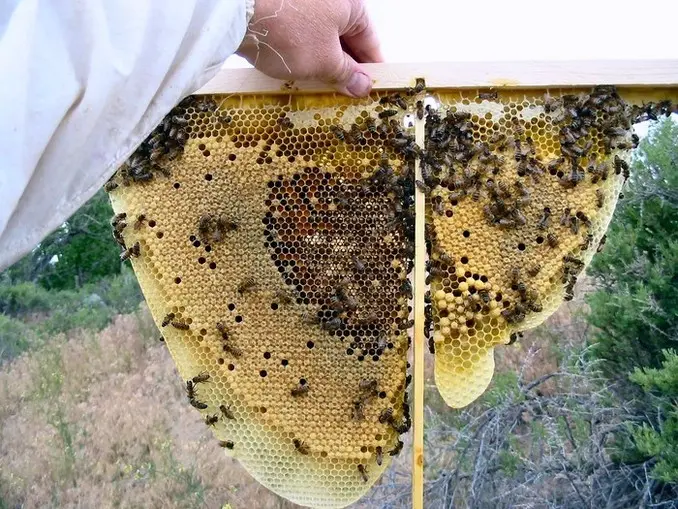Embracing the Buzz of Spring Swarming!

Hello Beekeepers and Nature Enthusiasts! 🌸🐝 Look at this captivating moment: the broodnest is abuzz, backfilled, with drones and a queen cell.
The hive is gearing up for a spectacular swarm! Nature truly is incredible, isn’t it?
Let’s delve into the fascinating world of bees and swarming. These tiny creatures, brimming with vigor and resources, embark on a transformative journey. Drones make their appearance, signaling the colony’s readiness to reproduce.
As the first drones emerge, queen cups are crafted, and the broodnest gets filled with nectar or diluted honey. This intentional backfilling serves multiple purposes, from restricting brood rearing to preparing a fuel source for the departing swarm.
Fast forward two weeks, and the colony gracefully splits:
- One half, along with the queen, embarks on a new adventure in search of a new home.
- A virgin queen emerges, mates, and takes charge of the remaining colony.
Collaborating with Nature
Now, it’s our turn to collaborate with these buzzing wonders. Work with the bees before they swarm, leveraging their vitality and the abundance of spring. When queen cells are capped, it’s a perfect opportunity to make splits or requeen hives:
- Replace winter losses
- Increase hive numbers
- Share the beekeeping love with fellow beekeepers
Splits
Consider setting up a split behind a follower board, if your hive design allows. It’s a convenient way to control swarming, replace queens, and act as a backup plan.
Don’t need another split? Gift it to a fellow beekeeper in need.
Requeening
Requeening might sound unnatural, but it’s a necessary step for maintaining vibrant colonies. All colonies have a lifespan of 3 to 5 years, experiencing swarms and queen supersedures. Proactive beekeepers track queens and replace them before they fail.
Follow the bees’ natural swarming inclination in spring. Split a swarming hive and let them raise a new queen. For a more hands-on approach, split your weaker colonies each spring and requeen them with swarm cells from your best stock.
To Swarm or Not to Swarm
Alternatively, you can let them swarm. It’s a natural behavior, and colonies that successfully mate the virgin queen still perform well in honey production and overwintering.
Swarm Prevention
While many methods claim to prevent swarming, they can inadvertently stress the colony. Traditional swarm prevention techniques like checkerboarding might not be feasible in a horizontal top bar hive, making prevention counterproductive.
For single-hive beekeepers without the option to make a split, swarm prevention reduces the risk of hive loss if a virgin queen fails to mate. Pay close attention, provide extra space by removing comb, and carefully manage swarm cells.
Unlike traditional equipment, finding queen cells in top bar hive comb is a breeze. They’re typically located along a few comb margins and communication holes in the core area.
A week later, revisit and trim swarm cells once more. This usually puts an end to swarming. Double-check and trim once more for good measure.
Let’s celebrate the dance of spring swarming and ensure our bees thrive! 🎉🌺
-Cheers, D 🐝🤠
